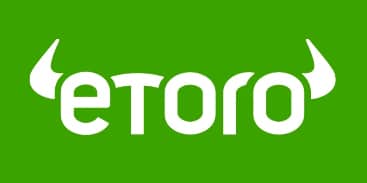Robinhood Stock Down 8% Today – Time to Buy HOOD Stock?
Please note that we are not authorised to provide any investment advice. The content on this page is for information purposes only.
Robinhood stock is down 8% this morning in pre-market stock trading action following the release of the firm’s Q3 2021 earnings report as multiple indicators pointed to ongoing weaknesses in some important growth drivers including lower crypto trading volumes and a decline in average revenues per user (ARPU).
For the three months ended on 30 September, Robinhood reported net revenues of $365 million resulting in a 35.2% increase compared to the same period a year ago and a 35.4% decline compared to the previous quarter. Analysts had estimated revenues of $437.6 million for the period, meaning that Robinhood missed Wall Street’s mark by nearly 17%.
This decline was primarily caused by lower transaction-based revenues, which landed at $267 million during the third quarter compared to $451 million the company brought during the previous quarter and $202 million it produced back in Q3 2020.
Lower cryptocurrency trading volumes were primarily responsible for this decline as they went down to $51 million compared to $233 million during the previous quarter and $5 million back in Q3 2020.
Meanwhile, net cumulative funded accounts experienced a slight quarter-on-quarter drop while monthly active users (MAU) went down from 21.3 million the previous quarter to 18.9 million.
Robinhood also experienced a drop in its average revenues per user (ARPU) compared to the previous year as they went down to $65 per user resulting in a 36.2% and 42% year-on-year and quarter-on-quarter decline respectively.
Guidance was weaker than expected as well with full-year revenues expected to land at $1.8 billion vs. $2.2 billion the market had estimated for the firm.
These disappointing quarterly results explain why Robinhood stock is dropping this morning. Can this result in the beginning of a prolonged downtrend for the brokerage firm? In this article, I’ll be taking a look at the price action and fundamentals of the company to possibly answer that question.
68% of all retail investor accounts lose money when trading CFDs with this provider.
Robinhood Stock – Technical Analysis

Robinhood stock managed to break above a falling wedge formation in the first few days of September but the price remained stalled as bulls failed to hold it above the short-term moving averages.
Yesterday, there was a suspicious uptick in trading volumes as more than 13 million shares exchanged hands during a session that ended up pushing the price 1.4% higher. These volumes exceeded the 10-day average by at least 3 times and they indicate that there were mixed perceptions about how this upcoming quarterly report would impact the firm’s valuation.
If this pre-market downtick spills over to the live session as is, the price will dive to its lowest level since 2 August, which was the third day on which Robinhood (HOOD) stock traded in the public markets following its long-awaited initial public offering (IPO).
Momentum oscillators remain quite bearish and will probably experience a further decline with the Relative Strength Index (RSI) standing at 42.5 while the MACD has just crossed below the signal line – typically a sell signal.
Overall, the outlook for Robinhood stock is bearish as indicated by the potential acceleration of its recent negative momentum while the stock remains well below its long-term and short-term moving averages.
Robinhood Stock – Fundamental Analysis
There are three concerning factors that are possibly driving today’s decline in Robinhood stock. First, a drop in cryptocurrency trading volumes is particularly worrying as the firm has relied on this segment to grow its top-line results in the past couple of quarters – primarily resulting from the heavy trading volumes seen by the meme crypto asset Dogecoin (DOGE).
This was a known risk for Robinhood investors as stated in the company’s S-1 and previous 10-Q report. “A substantial portion of the recent growth in our net revenues earned from cryptocurrency transactions is attributable to transactions in Dogecoin”, stated the risk disclosure.
It continues as follows: “If demand for transactions in Dogecoin declines and is not replaced by new demand for other cryptocurrencies available for trading on our platform, our business, financial condition and results of operations could be adversely affected”.
In the previous quarter, Dogecoin volumes accounted for 62% of the firm’s crypto-related transaction-based revenues.
It is important to note that the price of this meme cryptocurrency has declined from an all-time high of 74 cents back in May to 24 cents today resulting in a 67.6% drop. Further weakness in the price of Dogecoin may lead to even lower crypto volumes for Robinhood.
Moreover, the second concerning factor is a huge drop in the company’s average revenues per user (ARPU) – which was possibly partially caused by a drop in crypto trading volumes as well. However, considering that the decline is also reflected on a year-on-year basis, this shows that trading volumes for the third quarter were probably much lower than they were back in the pandemic across all asset classes.
It seems that the tailwind that lifted transaction volumes within the platform may be fading and that could lead to much lower top-line results for Robinhood in the future compared to a year ago.
Finally, the firm’s adjusted EBITDA swung to negative territory during the quarter, landing at $84 million compared to the positive $59 million figure the firm had reported in Q3 2020.
The absence of fair-value accounting adjustments and other non-core items were primarily responsible for this drop in the company’s earnings generation capacity. Moving forward, this quarter paints a more accurate picture of the kind of profitability the firm can deliver.
All things considered, the company’s current market capitalization of $33.9 billion seems quite stretched considering the ongoing weaknesses identified above. Using the company’s forecasted full-year 2021 sales of $1.8 billion, we get a price-to-sales ratio of almost 19 that exaggerates the kind of growth and profitability that a company like Robinhood can deliver in the near future.






